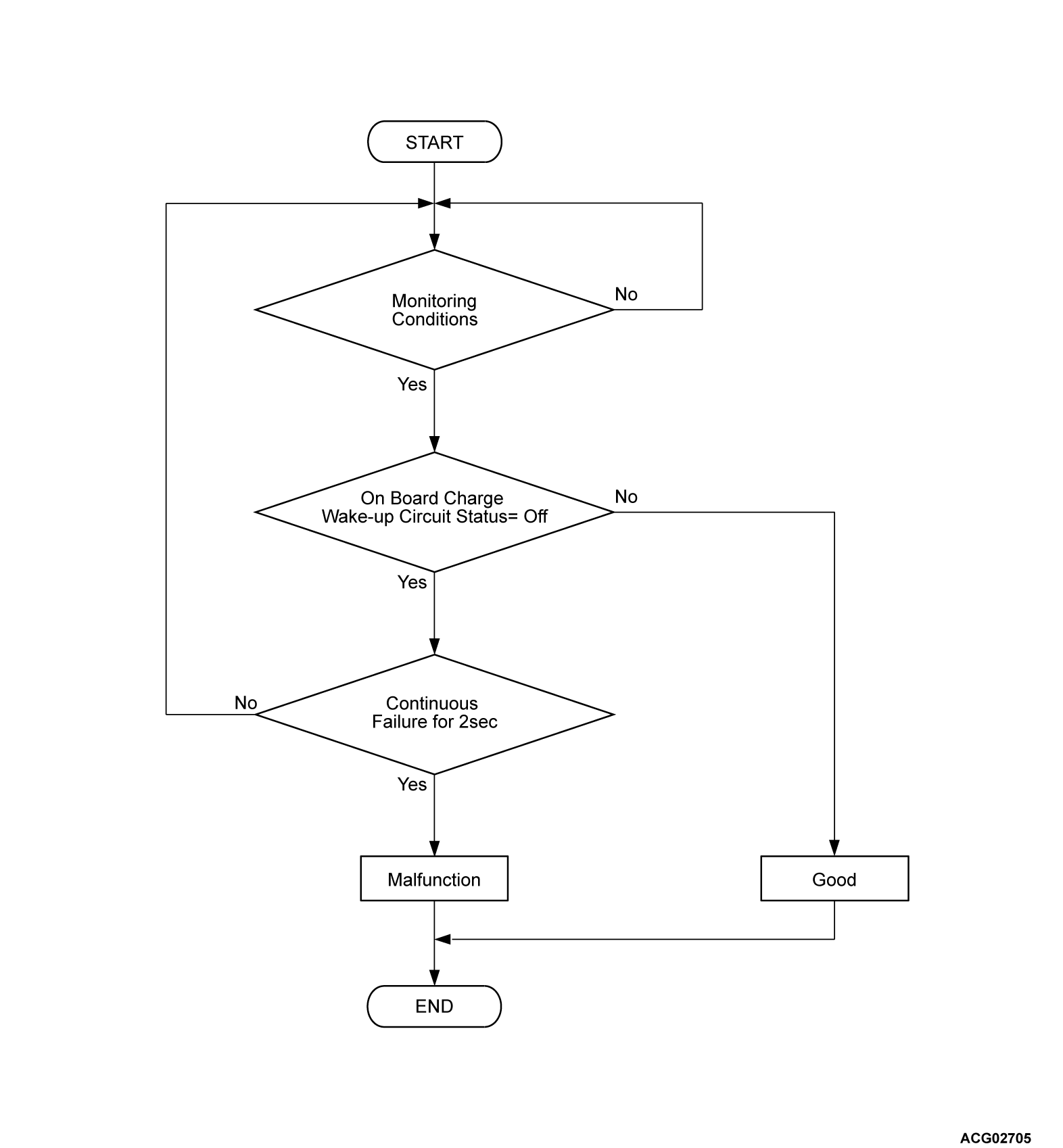DTC P10C0: On board charge start signal HI
| caution | Whenever ECU is replaced, ensure that the CAN bus lines are normal. |
DESCRIPTIONS OF MONITOR METHODS
- These monitors will run after the ignition is on.
- PHEV-ECU monitors the on board charge wake up circuit while On board charger/DC-DC converter turns the circuit on and off.
- The PHEV-ECU detects the circuit failure based on the status of the on board charge wake up circuit during that on-off operation.
- During charging, the PHEV-ECU will not activate if the on board charge wake up circuit fails. Therefore, the on board charge wake up circuit monitor will not run during charging.
MONITOR EXECUTION
Once per driving cycle
MONITOR EXECUTION CONDITIONS (Other monitor and Sensor)
Other Monitor (There is no temporary DTC stored in memory for the item monitored below)
- Not applicable
Sensor (The sensor below is determined to be normal)
- Not applicable
Check Conditions
- The power supply mode of electric motor switch is ON.
- The PHEV-ECU power supply voltage is more than 9.0 volts.
- Time after above conditions satisfy is less than 3 seconds.
- The back-up voltage is more than 6.0 volts.
Judgment Criterion
- When a state where the on board charger/DC-DC converter wake-up circuit is OFF continues for 2 seconds
PROBABLE CAUSES
- Damaged harness or connector.
- Malfunction of the On board charger/DC-DC converter.
- Malfunction of the Sub-battery management unit [BUM(SUB)].
- Malfunction of the PHEV-ECU.
DIAGNOSIS
Required Special Tools
- MB991223: Wiring harness set
- MB992006: Extra fine probe
STEP 1. Check the signal line for short to power supply circuit (On board charger/DC-DC converter, main drive lithium-ion battery and PHEV-ECU).
(1) Disconnect the C-38 PHEV-ECU connector, D-34 main drive lithium-ion battery connector, D-208 on board charger/DC-DC converter connector, and measure at the wiring harness side.
(2) Measure the resistance between D-208 on board charger/DC-DC converter connector (terminal CHOT) and D-208 on board charger/DC-DC converter connector (terminal IGCT).
OK: No continuity
Is the check result normal?
STEP 2. Check the signal line for open circuit (On board charger/DC-DC converter and PHEV-ECU).
(1) Disconnect the C-38 PHEV-ECU connector, D-208 on board charger/DC-DC converter connector, and measure at the wiring harness side.
(2) Measure the resistance between the D-208 on board charger/DC-DC converter connector (terminal CHOT) and the C-38 PHEV-ECU connector (terminal CHGP).
OK: Continuity exists (2 Ω or less)
Is the check result normal?
STEP 3. Check the signal line for short to power supply circuit (main drive lithium-ion battery connector).
(1) Disconnect the D-34 main drive lithium-ion battery connector and measure at the wiring harness side.
(2) Measure the resistance between D-34 main drive lithium-ion battery connector (terminal WKUP) and the D-208 on board charger/DC-DC converter connector (terminal IGCT).
OK: No continuity
Is the check result normal?
STEP 4. Using scan tool (M.U.T.-IIISE), check whether the DTC is set again.
Recheck the DTC.
(1) Erase the DTC.
(2) Turn off the power supply mode of the electric motor switch.
(3) Turn on the power supply mode of the electric motor switch.
(4) Check the DTC.
Is the DTC set?
![[Previous]](../../../buttons/fprev.png)
![[Next]](../../../buttons/fnext.png)



